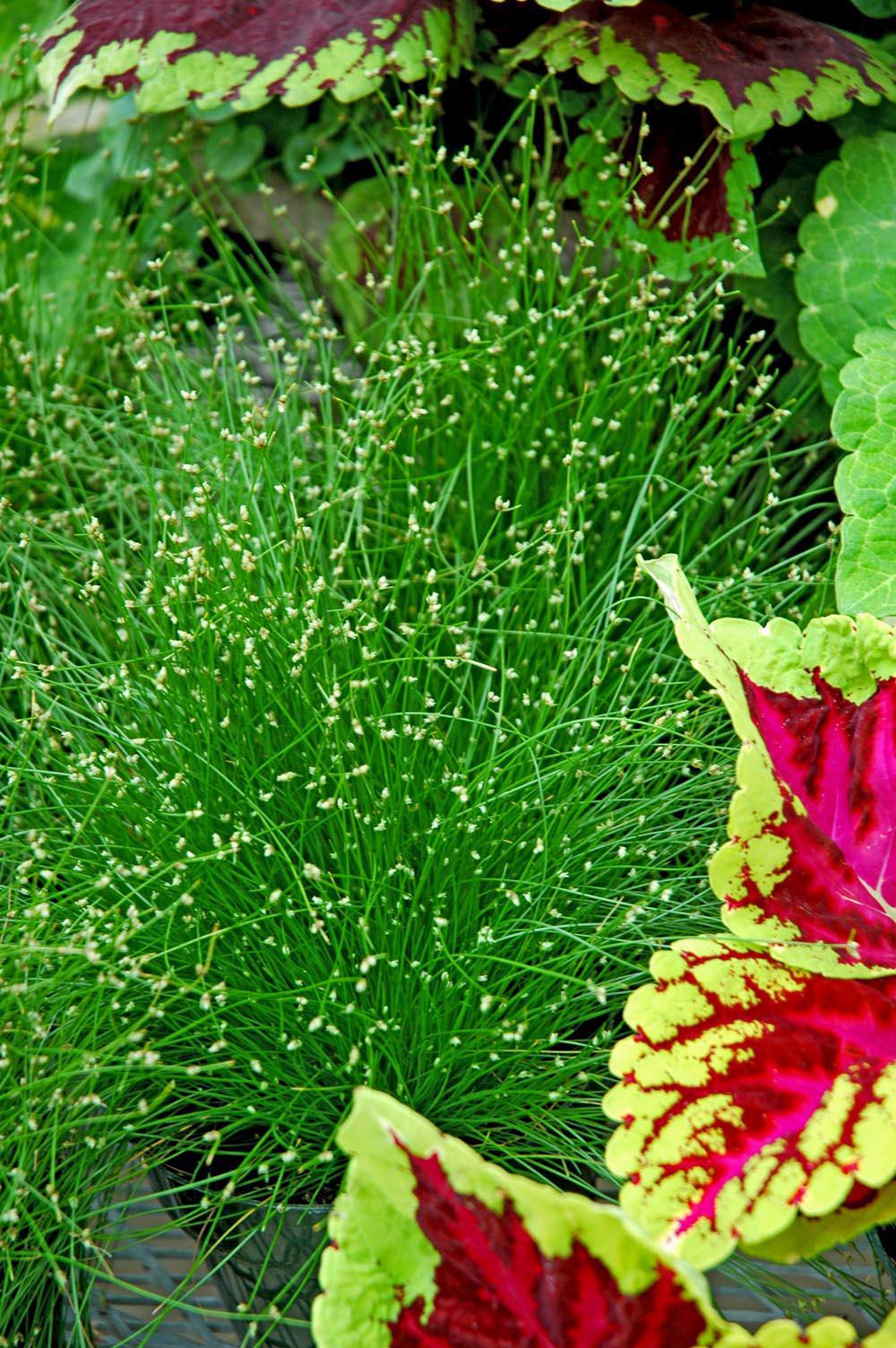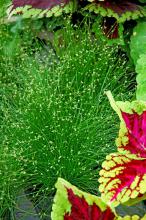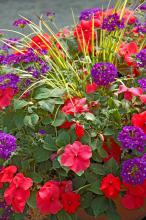Information Possibly Outdated
The information presented on this page was originally released on March 8, 2007. It may not be outdated, but please search our site for more current information. If you plan to quote or reference this information in a publication, please check with the Extension specialist or author before proceeding.
Use Live Wire grass for mixed containers
By Norman Winter
MSU Horticulturist
Central Mississippi Research & Extension Center
Mixed planters are featured prominently at shopping malls and office buildings, and consumers place glorious mixed containers and baskets on their porches, patios and decks. Other than vibrant color, a common thread tying them together is the incorporation of ornamental grass.
One of the hottest grasses is the new Live Wire Fiber Optic grass. This grass is trendy and the perfect complement to any mixed container or planter box. Each blade of grass has a little knob on the end that looks like a bulb. It looks like you should be able to flip a switch and turn it on like the fiber optic Christmas trees.
Live Wire is the first seed-produced fiber optic grass. This isn't necessarily an issue for you, however, because you will buy transplants from your garden center. The plants reach will about 8 to 10 inches tall and spread outward 18 to 20 inches.
We are talking about mixed containers that normally get switched out in plantings, but Fiber Optic is cold hardy to zone 8 and tolerates moist conditions. It is known botanically as Isolepis cernua and is native to the coast of North Africa and southern Europe.
I have seen wonderful plantings where Live Wire has been tucked in pockets as a filler plant and partnered with coleus. I have seen it used in other containers with Dakota Gold helenium and Serena angelonias. It performs best in morning sun and afternoon shade or high filtered light. If the water is there, it can tolerate a lot more sun.
Another prominent grass for consideration in mixed containers is the dwarf Japanese sweet flag known botanically as Acorus gramineus. The variety called Ogon stands out dramatically with its bright golden leaves that serve as the perfect complement to flowers of almost any other color. Ogon will reach about 12 inches tall.
The dwarf Japanese sweet flag also makes a fine addition to the landscape and is cold hardy from zones 5-9. It spreads from the tips of rhizomes, similar to the way an iris spreads. This gives you the option of using it as a ground cover. It does best with a little filtered shade during the heat of the day.
Plant your dwarf Japanese sweet flag so the rhizome is showing slightly above the soil line, then water thoroughly. Since it likes moist soil, be sure to apply a good layer of mulch and water during droughty periods.
The soil should be fertile, organically rich or loamy, and retain moisture well. Tight clay soils will not make you or the sweet flag very content.
The last grass I want you to consider for a terrific look in a mixed container is ribbon grass, Phalaris arundinacea. These are cold hardy to zone 3 and come in brightly variegated forms like Picta, those with a blush pink like Strawberries and Cream, and compact selections like Garters dwarf. These will reach from 18 to 36 inches tall.
As you prepare your mixed container, it is important to use a good, lightweight potting mix that drains freely. Heavy soils in containers bring on a multitude of problems, including a backache when you want to move them.
Flowers are great for your containers, but adding some ornamental grass is like the icing on the cake. Look for Live Wire and other new grasses at the 10th Annual Jackson Garden and Patio Show March 16-18 at its new location in the Mississippi Trade Mart.




